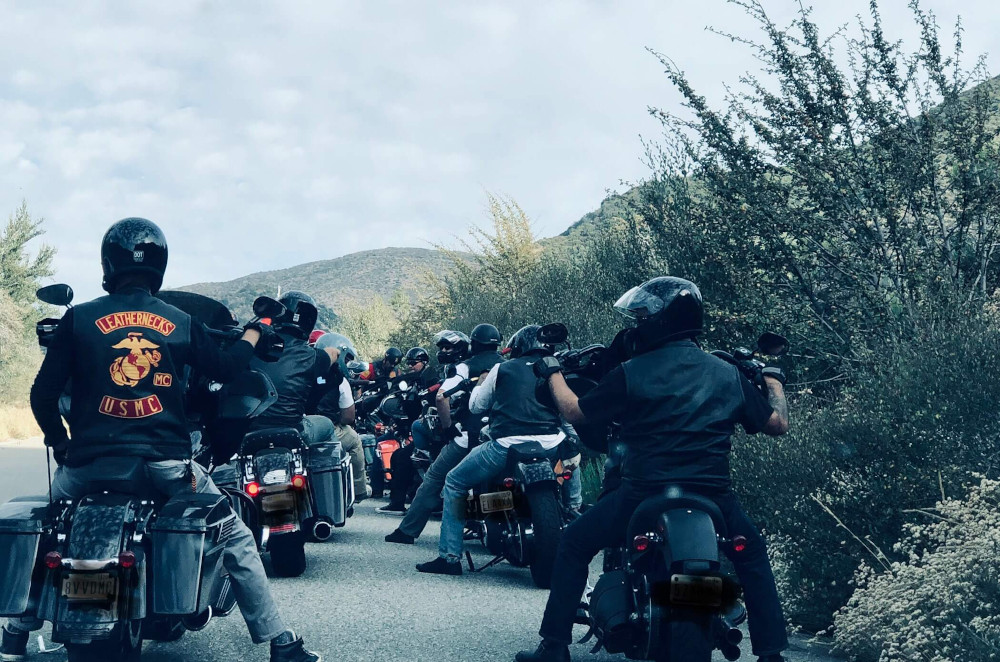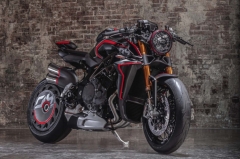Here's why you should avoid lane sharing on a motorcycle
There are a few risks associated with this, especially at higher speeds.

While the topic of whether or not lane splitting and filtering is safe is up for debate, this isn’t what we are here to talk about today. This article focuses on lane sharing, defined as two or more motorcycles riding abreast, that’s side-by-side, while occupying a single lane on a road or highway. While this is an inevitable occurrence, especially in Manila’s dense traffic, it mostly happens when one motorcycle overtakes another. In this instance, the lane is shared only momentarily, say, a few seconds.
The danger lies in prolonged lane sharing, say, when you and your buddy ride side-by-side for extended periods of time on the expressway or on backcountry roads. Naturally riding for long periods of time with another motorcycle mere inches away from you requires a lot more focus, skill, and the increased risk of an accident. Here are a few reasons why we should avoid prolonged lane sharing, as well as what we should do if we find ourselves in a group ride which is prone to lane sharing.
Smaller margin for error

As mentioned earlier, lane sharing is when two motorcycles ride side-by-side while occupying a single lane. This can occur either on city streets like EDSA or C5, or on the expressways, for those of us who ride big bikes. Naturally, when two bikes ride side-by-side, on a single lane, this drastically reduces the margin of error in the event of an untoward incident. Say, a car decides to swerve into your lane all of a sudden, there won’t be any room for you to adjust your position within the lane to account for the sudden lane change.
Lane sharing also significantly decreases your reaction time, as a lot of your attention is focused on riding at such a close proximity to another rider. As such, this can affect your braking and maneuvering skills in a negative manner. When it comes to riding motorcycles, it’s always best to take the most defensive approach, and give yourself the largest time and space cushion in order to react to the things around you.
Unpredictable behavior

If you find yourself in heavy traffic surrounded by other motorcycles, it can be all too easy to succumb to the temptation to get ahead. Naturally, in doing so, you could easily find yourself squeezing past multiple other motorcycles and cars. Doing so subjects yourself to the unpredictable behavior of the cars and bikes around you. What if the motorcycle on your right decides to abruptly swerve to the left to avoid a pothole? Or what if the car in front of you decides to hit the brakes all of a sudden, but you have no space on your left or right to avoid it?
When riding on public roads, especially in heavy traffic conditions, it can be all too difficult to predict the behavior of traffic around you. As such, it’s definitely a good idea to go at a moderate pace, and give yourself space to ride in a comfortable and relaxed state of mind. You won’t really more than a couple of seconds by slowing down and giving way to traffic in order to maintain your lane.
Stay in formation instead

When riding in a group, especially on the highway or open road, it’s a good idea to maintain a staggered formation, as opposed to riding side-by-side in a single lane. As discussed earlier, riding side-by-side prevents you and the riders around you from having the state of mind and awareness of the things going on around you. Meanwhile, adopting a staggered formation allows all riders in the group to have clear peripheral vision, as well as have the rider in front of them directly in their line of sight.
Having a clear view of what's on your left and right is undoubtedly beneficial for you and the other motorcyclists in your group, as it makes it easy for you to avoid obstacles or make emergency maneuvers should you need to do so. It also puts you in the position to alert your riding group of any incoming hazards, either through the use of an intercom system, or hand signals. If you’re trailing or sweeping, it also makes it easy for you to keep an eye on all the other riders in your group, to make sure that everyone is riding safely and comfortably.
Related Articles
-
The unseen dangers of carrying too much cargo on your motorcycle / Featured Article
Let’s take a moment to discuss the dangers of overloading your motorcycle, and the safety and mechanical issues that may arise due to this.
-
5 things to remember when shopping for new motorcycle tires / Featured Article
Here are 5 things to consider when time comes for you to replace the tires on your motorcycle.
-
Can't ride your motorcycle because it's raining? Do these 4 things instead / Featured Article
Here’s a quick listicle of activities you can do if you can’t ride your motorcycle because of bad weather.
-
Which motorcycle jacket should you buy for your riding style? / Featured Article
There are a multitude of options when it comes to riding jackets. Let’s take a closer look at some of the most popular types.
-
Top 5 greatest motorcycle tech advancements of the modern era / Featured Article
Here are what we consider as the top 5 greatest motorcycle innovations of the past decade or so.
Latest Features
-
How does motorcycle traction control work, and do you really need it? / Featured Article
Have you ever wondered how traction control works? If so, read on to learn more about this technology.
-
Check out these 4 things if your motorcycle's handling seems to be off / Featured Article
If you’ve noticed that your motorcycle has been handling in an odd manner, there could be a number of issues beneath the surface.
-
Here's why mid-size adventure bikes just make sense / Featured Article
Adventure bikes are commonly associated with big engines and a hefty stance. Does it really have to be this way?









